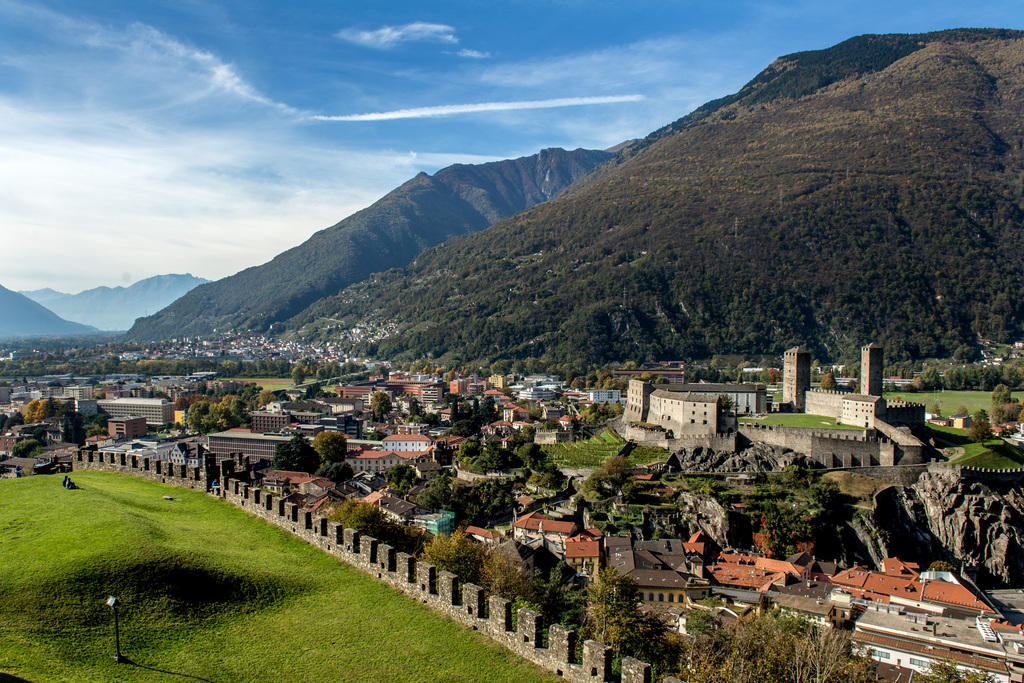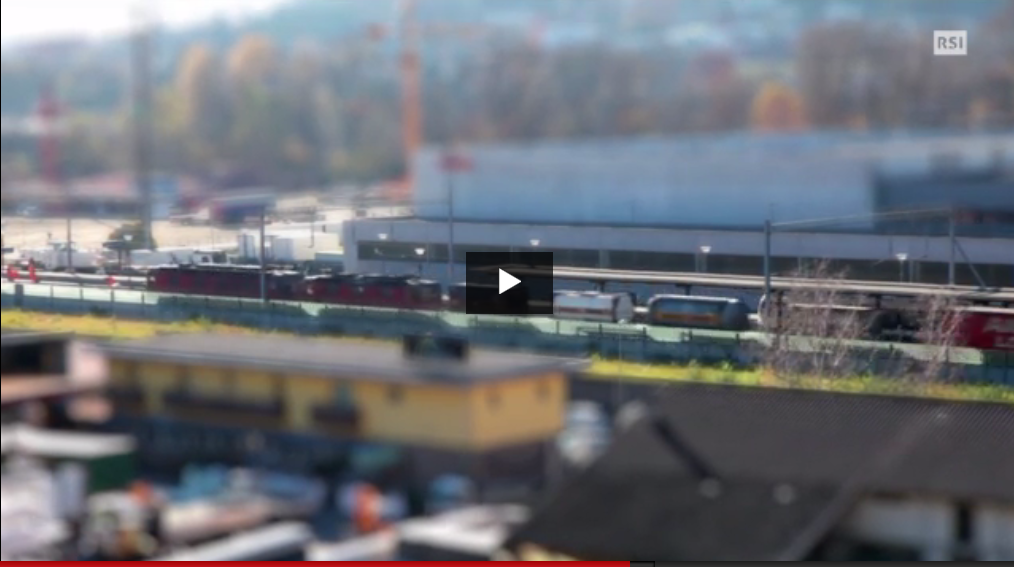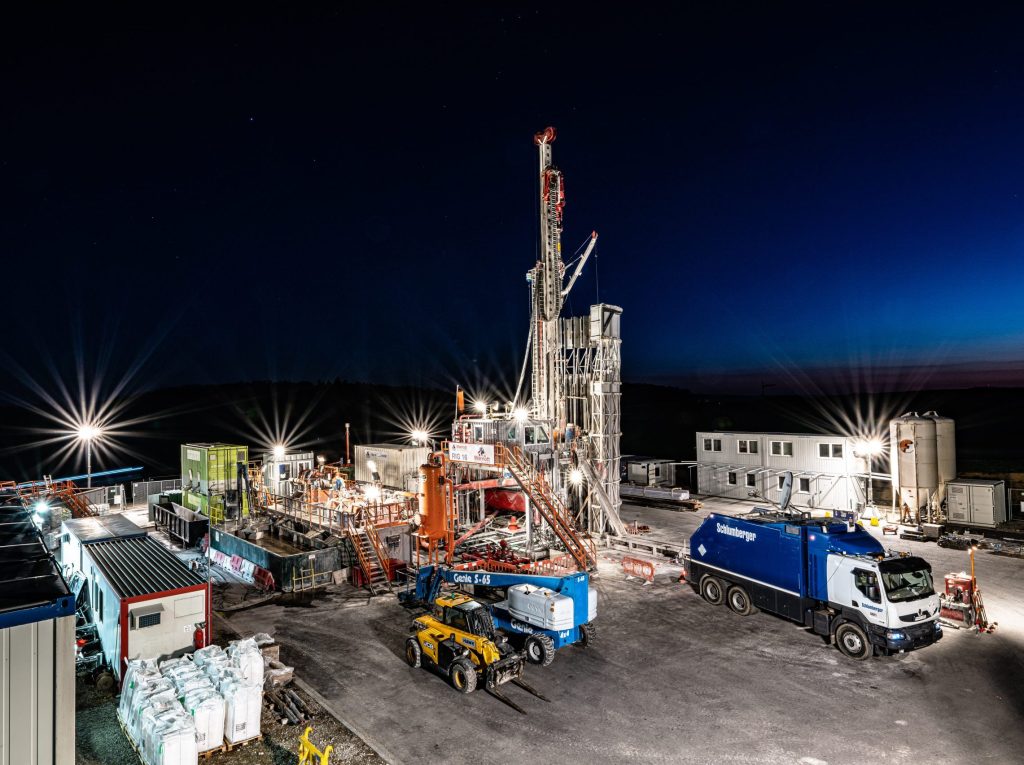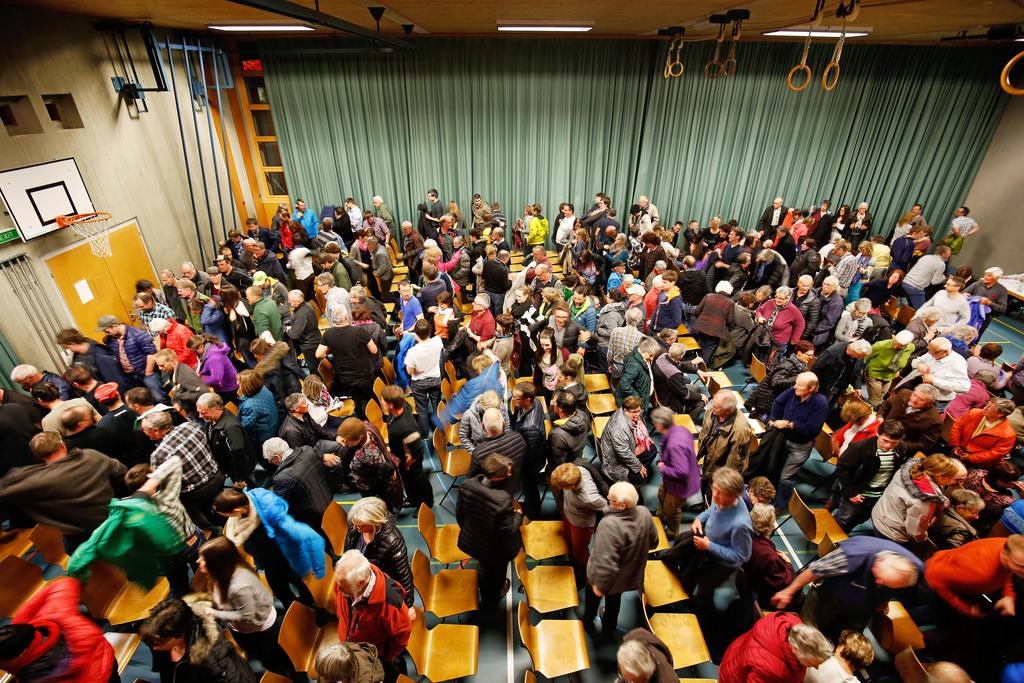Bellinzona: a democratic window to the future

The population of the Swiss town of Bellinzona will more than double in April from just over 18,000 to more than 42,000. This is the result of fusing – “aggregating” – with 12 other municipalities, part of a largescale merging process underway in canton Ticino.
Central to this process is the participation of citizens and the autonomy of municipalities, basic components of direct democracy and Swiss federalism.
The aggregation, unprecedented in size in Switzerland, marks a change in an already highly fragmented region of Ticino, the Sopraceneri. In particular in its two urban agglomerations, namely Bellinzona and Locarno.
In addition, this step “brings all of Ticino into the 21st century”, said Norman Gobbi from the cantonal department of institutions in October 2015. He was commenting on the outcome of an advisory vote on the aggregation project to create the new Bellinzona. Voters said yes in 13 of the 17 municipalities involved.
The project in Bellinzona is an important cog in the canton’s aggregation strategy. Based on studies, reports and consultation procedures, it links a wealth of information with substantial financial incentives and is counting above all on the willingness of local authorities and citizens.
In constant development, the aggregation policy in Italian-speaking Ticino began at the end of the 1990s.
“At the time in Ticino there were 247 municipalities – in other words the same number as in the time of Napoleon in 1803, when the canton was born,” said Elio Genazzi, head of the cantonal section of local institutions.
“It’s worth pointing out that the municipalities have remained practically unchanged while the customs and requirements of the citizens have changed profoundly. The considerable heterogeneity between municipalities has resulted in a cantonal centralisation of local functions – which would be those typical for the municipalities – since not all [municipalities] were able to perform them.”
This resulted in a distortion of Switzerland’s system of federalismExternal link based on three levels – municipal, cantonal and federal – each with its own jurisdictions and responsibilities.
“Aggregation is a necessary step in reinforcing the municipalities and reinvigorating federalism so that it works,” Genazzi said.
‘Gate to Ticino’
In the case of the new Bellinzona, “the idea is to build a municipality which has the financial and technical resources, the professional skills and the infrastructure to be able to manage local social, economic and cultural policies, to develop regional mobility and to guarantee spatial planning that takes into account today’s parameters,” said Mario Branda, mayor of Bellinzona.
The capital of Ticino is also getting ready for the expected developments following the opening last December of the new Gotthard rail tunnel.
The notable shortening of the travel time between the north and the south is expected to increase mobility greatly. This should translate into an expansion of Bellinzona, the first station on the south side of the Gotthard, or the “Gate to Ticino”.
Popular support
To cope with the challenges to come, Bellinzona must stick together, says Branda, adding that the participatory process on which the aggregation is built “will enable it to move forwards with the necessary support. For this, I think it is important that municipal aggregations pass the popular test”.

More
Popular participation and will – above everything
Popular participation and respect of the will of the majority are essential, agree the mayors of the municipalities that rejected aggregation.
But while the will of the four municipalities who did not want to take part in the Bellinzona aggregation has been respected, that has not always been the case in Ticino. Indeed, cantonal law provides for “compulsory aggregation”.
Although this is limited by precise conditions, it is bitterly criticised by opponents, who say it is a violation of the broad autonomy that municipalities enjoy under the Swiss federal system.
“But the autonomy is not simply legal – real autonomy means that the municipalities can satisfy the demands of their own citizens,” said Genazzi.
To the detriment of suburbs?
This is the opposite of the view held by the Ticino Association for the Autonomy of the Municipalities, which, among other things, has supported 81 citizens who appealed to the supreme court (in vain) against the Bellinzona aggregation.
According to the association’s president, Alberto Poli, most of the municipal aggregations in Ticino have benefited the city centres to the detriment of the suburbs.
“Citizens in the suburbs voted by a vast majority in favour of the mergers, but once these were carried out, the people were unhappy and regretted their decision,” he said.
However, the success of two cantonal people’s initiatives demanding large-scale municipal mergers seems to show that many citizens are leaning in favour of this development.
The first initiative sees the creation of two urban centres – Bellinzona and Locarno; the second wants to reduce the number of municipalities in Ticino to 15 – down from the 135 that existed in 2013 when the initiative was handed in. Voters were unable to have their say on the first one since it was declared inadmissible. The second will probably meet the same fate.
However, the new Bellinzona accepted by the municipalities involved is practically identical to that envisaged by the invalid initiative. Giorgio Ghiringhelli, who organised the rejected initiative, says the strong response of citizens when he was collecting signatures was “the psychological mechanism which accelerated the process of aggregation in Bellinzona”.
And the mega-aggregation of Bellinzona could give a boost to those regions in Ticino where parochialism and strong local pride seem still to prevail. A new dynamic which would smooth the way for the way for the implementation of the cantonal plan for a Ticino of little more than 20 or so municipalities.
Dwindling municipalities
Across Switzerland 39 municipalities disappeared in 2016, bringing the total to 2,255 as of January 1, 2017. Thus a long-standing trend continues: in 1860, Switzerland comprised more than 3,200 municipalities. The reduction is the result of fusions between municipalities. The most common reasons for these are a shortage of money and volunteers to carry out administrative tasks, which are often complex and have to be delegated to higher instances.
Municipalities are the backbone of Swiss democracy and enjoy broad autonomy. This is based on the principle of federalism, in which power in Switzerland is divided on three levels: federal, cantonal and municipal.
(Translated from Italian by Thomas Stephens)

In compliance with the JTI standards
More: SWI swissinfo.ch certified by the Journalism Trust Initiative













You can find an overview of ongoing debates with our journalists here . Please join us!
If you want to start a conversation about a topic raised in this article or want to report factual errors, email us at english@swissinfo.ch.